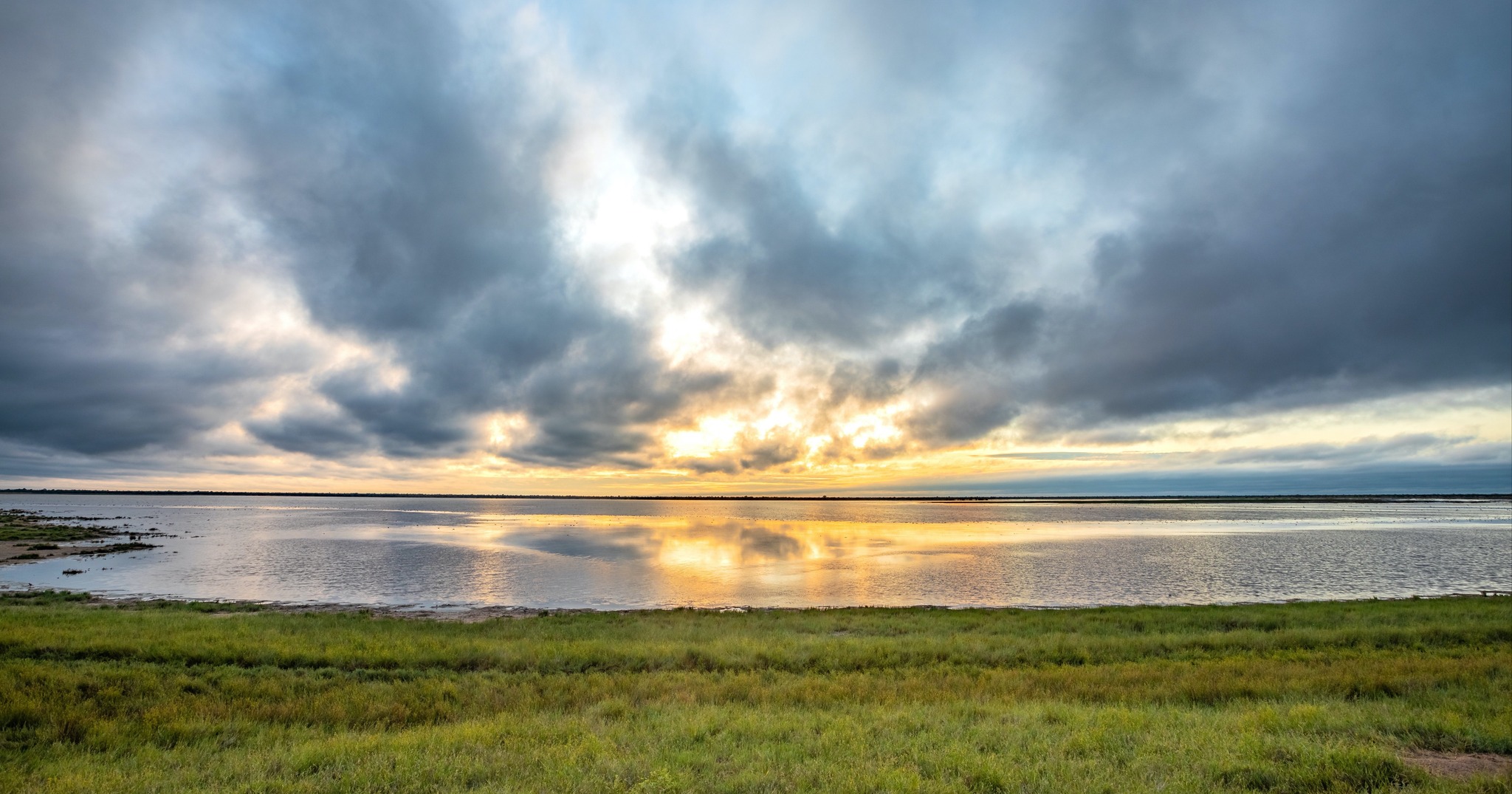The Kalahari Desert is one of Africa’s most iconic landscapes, known for its red sands, vast horizons, and a surprisingly diverse range of life. Stretching across several countries, including Botswana, South Africa, and Namibia, the Kalahari is often perceived as a barren wasteland. However, beneath its seemingly harsh exterior lies an intricate web of unique ecosystems that are home to an extraordinary variety of flora and fauna. Namibia, in particular, offers a fascinating glimpse into the Kalahari Desert’s hidden oases and their role in supporting life in this arid region.
The Kalahari: Not a True Desert
Despite being called a desert, the Kalahari is technically a semi-arid savanna. It receives more rainfall than a true desert like the Namib, with annual precipitation ranging from 100 to 500 millimeters. This rainfall, though sparse and unpredictable, supports a surprising amount of vegetation, including grasses, shrubs, and trees like the camel thorn (Acacia erioloba) and shepherd’s tree (Boscia albitrunca). These plants play a crucial role in sustaining the desert’s diverse wildlife and people.
The Kalahari’s soil, however, is sandy and lacks the ability to retain water, which contributes to its desert-like conditions. Yet, pockets of life persist in areas where water is available, creating hidden oases that are vital to the region’s ecological balance.
Namibia’s Unique Oases in the Kalahari
Namibia’s portion of the Kalahari is characterized by its striking red dunes, salt pans, and ephemeral rivers. Among these arid landscapes are hidden oases that support a diverse range of life. These oases take various forms, including underground aquifers, seasonal pans, and vegetated riverbeds.
The Okavango and Kavango Regions
While technically extending beyond the Kalahari, the Okavango and Kavango regions in northeastern Namibia are vital to the desert’s ecological network. The Okavango River flows into the Kalahari, creating a lush and verdant ecosystem that contrasts sharply with the surrounding arid landscapes. This region supports a variety of wildlife, including elephants, hippos, crocodiles, and over 400 species of birds.
Seasonal flooding from the river creates temporary wetlands that attract migratory species and provide water to local communities. These wetlands are essential for maintaining the delicate balance of the Kalahari’s ecosystems.
Nyae Nyae Pans and Other Seasonal Wetlands
The Nyae Nyae Pans in Namibia are among the most significant seasonal wetlands in the Kalahari. During the rainy season, these pans fill with water, attracting herds of zebras, springboks, and wildebeests, as well as predators like lions and cheetahs. When the pans dry up, they leave behind mineral-rich soils that support a variety of plant life.
These temporary water sources are also vital for the indigenous San people, who have lived in harmony with the Kalahari’s challenging environment for thousands of years. The San rely on their extensive knowledge of the land to find water, food, and shelter in this arid region.
Flora: The Foundation of Life
The vegetation in the Kalahari Desert plays a vital role in supporting its ecosystems. Some of the most notable plants include:
- Camel Thorn Tree (Acacia erioloba): This iconic tree is a keystone species in the Kalahari. Its deep roots access underground water, and its pods provide food for herbivores.
- Tsamma Melon (Citrullus lanatus): A wild ancestor of the modern watermelon, the tsamma melon is a crucial water source for both animals and humans.
- Devil’s Claw (Harpagophytum): Known for its medicinal properties, this plant thrives in the sandy soils of the Kalahari and is used by local communities for treating various ailments.
Fauna: Adaptations to Survival
Despite its arid conditions, the Kalahari is teeming with life. Animals in this region have evolved unique adaptations to survive the desert’s extreme temperatures and scarce water supply.
Mammals
- Meerkats: These small, social mammals are one of the Kalahari’s most iconic species. They live in burrows to escape the heat and are highly skilled at finding insects and small prey.
- Gemsbok (Oryx): This large antelope is adapted to survive without water for extended periods. It obtains moisture from the plants it eats and has a unique cooling mechanism in its nasal passages.
- Brown Hyenas: Known as “strandwolves” in Afrikaans, these scavengers are highly adapted to the desert and can travel long distances in search of food.
Birds
The Kalahari is home to a wide range of bird species, including the majestic Kori bustard, one of the heaviest flying birds in the world. Other notable species include sociable weavers, which build massive communal nests, and secretary birds, known for their unique hunting technique of stomping on prey.
Reptiles and Amphibians
Reptiles such as the Kalahari sand snake and puff adder thrive in the desert’s hot and dry conditions. Amphibians like the African bullfrog remain dormant underground during dry periods, emerging only after heavy rains.
The San People: Guardians of the Kalahari
The indigenous San people, also known as Bushmen, are the original inhabitants of the Kalahari. They have lived sustainably in this harsh environment for thousands of years, relying on their deep understanding of the land’s resources.
The San practice traditional hunting and gathering, using tools such as bows and poisoned arrows to hunt game. They also harvest wild plants, including the tsamma melon and !nara fruit, which provide essential nutrients and water.
The San’s knowledge of the Kalahari’s ecosystems is unparalleled, and their stories and traditions are deeply intertwined with the land. Efforts to preserve their culture and way of life are crucial to maintaining the region’s heritage.
Conservation Efforts
Namibia has been a global leader in conservation, implementing innovative policies to protect its unique ecosystems. The establishment of conservancies, where local communities manage and benefit from wildlife resources, has been a game-changer for both conservation and rural development.
Programs like the Kavango-Zambezi Transfrontier Conservation Area (KAZA) aim to create corridors for wildlife migration and protect the Kalahari’s fragile ecosystems. These initiatives not only preserve biodiversity but also support sustainable tourism, which contributes to Namibia’s economy.
The Kalahari Desert, with its hidden oases and unique ecosystems, is a testament to the resilience of life in extreme conditions. Namibia’s portion of the Kalahari offers a glimpse into the intricate balance of nature, where plants, animals, and people have adapted to survive and thrive.
As global attention shifts toward conservation and sustainability, the Kalahari serves as a powerful reminder of the importance of preserving our planet’s diverse ecosystems. Whether through its stunning landscapes, remarkable wildlife, or the wisdom of its indigenous people, the Kalahari Desert continues to inspire and captivate all who explore its secrets.
Join 'Namibia Today' WhatsApp Channel
Get the breaking news in Namibia — direct to your WhatsApp.
CLICK HERE TO JOIN












